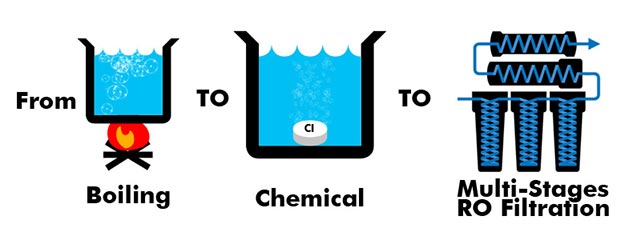Single media filters, typically constituting carbon or sand, absorb impurities from water, through both physical and chemical processes, as the water passes through the filter cartridge.
Single media filters will generally remove undesirable tastes, colors, and odors from water as well as such chemicals as hydrogen sulfide, radon, chlorine, volatile organic compounds (VOCs), pesticides, and benzene (Ramstorp, 2003). Drinking water filters will also remove lead and other chemicals transferred from plumbing systems to water.
Filtration is the only water purification process that will remove chlorine and chlorine byproducts from water. It is also the only water purification process that reliably and completely removes harmful pesticides from water. Single media filters will not remove mineral compounds from water.
The true power of the filtration process lies in multimedia filtration technology. By using multimedia filters, select minerals can be retained in water while more harmful or useless minerals and chemicals can be removed. The magic of multimedia filters lies in their use of chemical processes, as well as physical processes for the removal of undesirable ground and surface water contents. As more media elements are added to the filter cartridge, the filter is able to remove more of the dangerous mineral contents. Multimedia filter cartridges can remove such harmful mineral deposits and chemical additives as arsenic and fluoride from drinking water. Though arsenic levels are generally low in most ground and surface water, the mineral can be deadly. Fluoride, while useful in maintaining healthy teeth, is a reactive and dangerous chemical that should be taken with care.


